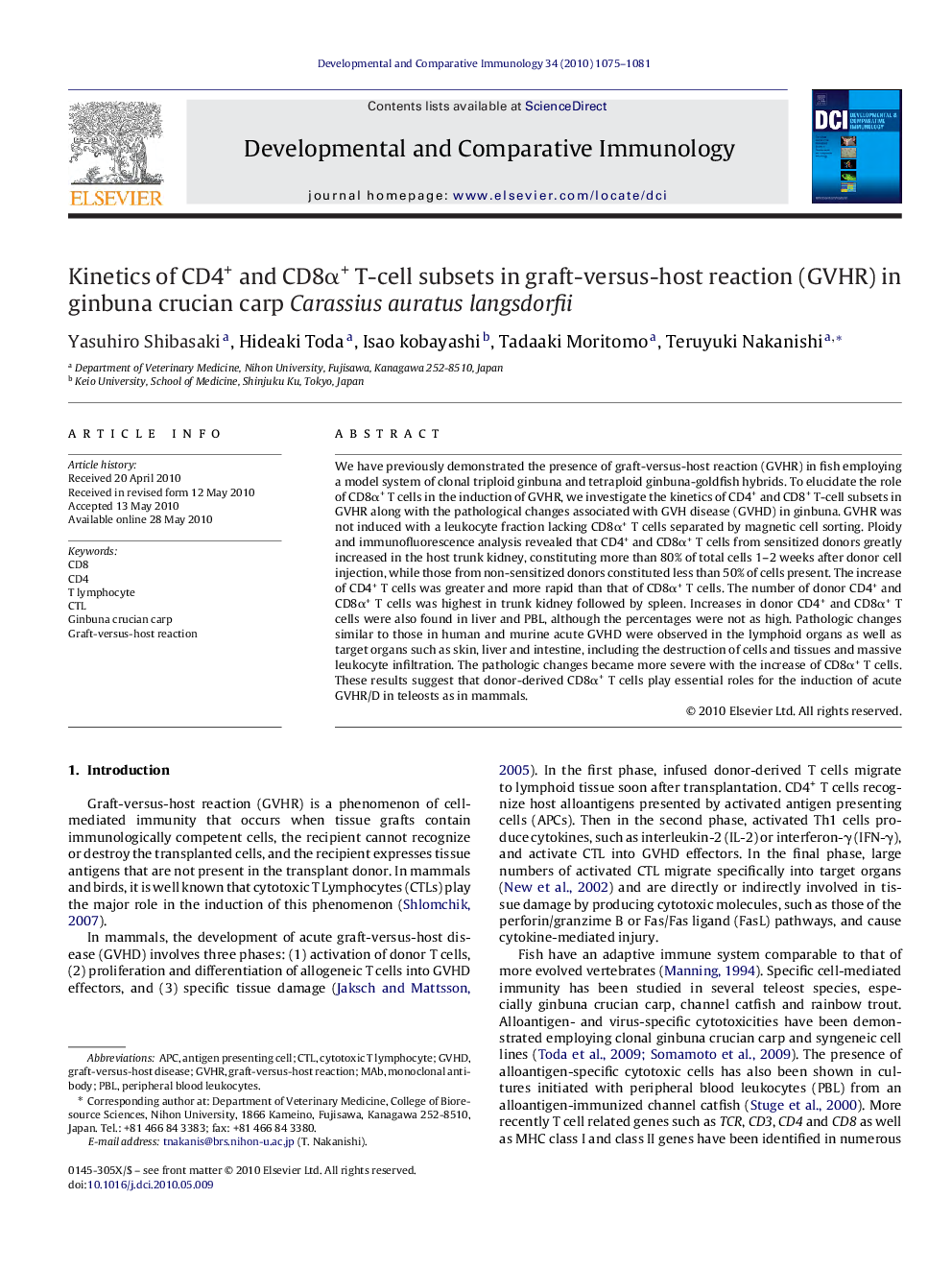| Article ID | Journal | Published Year | Pages | File Type |
|---|---|---|---|---|
| 2429759 | Developmental & Comparative Immunology | 2010 | 7 Pages |
We have previously demonstrated the presence of graft-versus-host reaction (GVHR) in fish employing a model system of clonal triploid ginbuna and tetraploid ginbuna-goldfish hybrids. To elucidate the role of CD8α+ T cells in the induction of GVHR, we investigate the kinetics of CD4+ and CD8+ T-cell subsets in GVHR along with the pathological changes associated with GVH disease (GVHD) in ginbuna. GVHR was not induced with a leukocyte fraction lacking CD8α+ T cells separated by magnetic cell sorting. Ploidy and immunofluorescence analysis revealed that CD4+ and CD8α+ T cells from sensitized donors greatly increased in the host trunk kidney, constituting more than 80% of total cells 1–2 weeks after donor cell injection, while those from non-sensitized donors constituted less than 50% of cells present. The increase of CD4+ T cells was greater and more rapid than that of CD8α+ T cells. The number of donor CD4+ and CD8α+ T cells was highest in trunk kidney followed by spleen. Increases in donor CD4+ and CD8α+ T cells were also found in liver and PBL, although the percentages were not as high. Pathologic changes similar to those in human and murine acute GVHD were observed in the lymphoid organs as well as target organs such as skin, liver and intestine, including the destruction of cells and tissues and massive leukocyte infiltration. The pathologic changes became more severe with the increase of CD8α+ T cells. These results suggest that donor-derived CD8α+ T cells play essential roles for the induction of acute GVHR/D in teleosts as in mammals.
